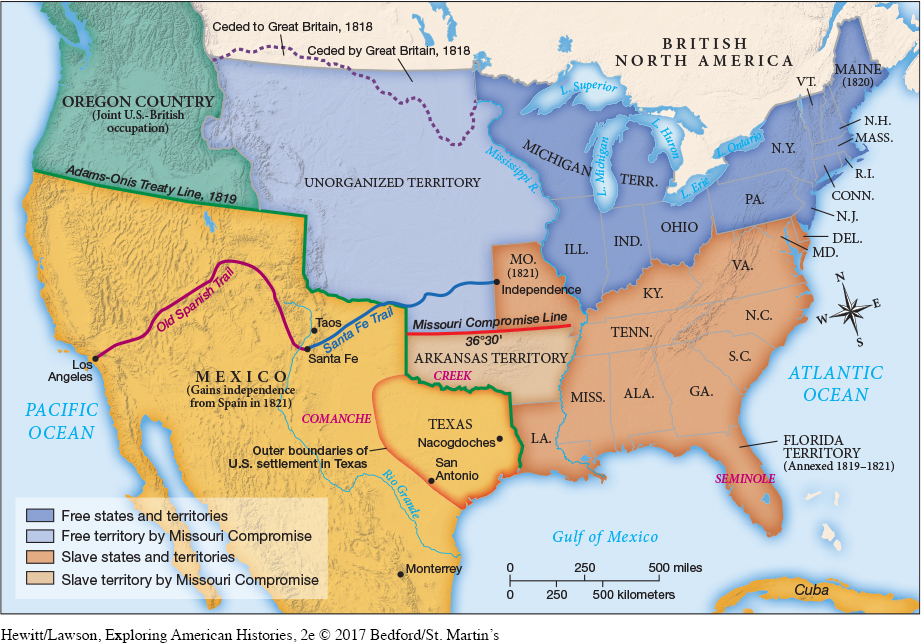Slavery in Missouri
A second national crisis highlighted regional systems of labor. In February 1819 the Missouri Territory applied for statehood. New York congressman James Tallmadge Jr. proposed that Missouri be admitted only if it banned further importation of slaves and passed a gradual emancipation law. Southern congressmen blocked Tallmadge’s proposals, but the northern majority in the House of Representatives then rejected Missouri’s admission.
Southern politicians were outraged, claiming that since the Missouri Territory allowed slavery, so should the state of Missouri. With cotton production moving ever westward, southern congressmen wanted to ensure the availability of new lands. They also wanted to ensure the South’s power in Congress. Because the northern population had grown more rapidly than that in the South, by 1819 northern politicians controlled the House of Representatives. The Senate, however, was evenly divided. If northerners could block the admission of slave states like Missouri while allowing the admission of free states, the balance of power in the Senate would tip in the North’s favor.
For southern planters, the decision on Missouri defined the future of slavery. With foreign trade in slaves outlawed, planters relied on natural increase and trading slaves from older to newer areas of cultivation to meet the demand for labor. Moreover, free blacks packed the congressional galleries in Washington to listen to congressmen debate Missouri statehood, leading supporters of slavery to worry that any signs of weakness would fuel resistance to slavery. Recent attacks on Georgia plantations by a coalition of fugitive slaves and Seminole Indians lent power to such fears.
In 1820 Representative Henry Clay of Kentucky forged a compromise that resolved the immediate issues and promised a long-term solution. Maine was to be admitted as a free state and Missouri as a slave state, thereby maintaining the balance between North and South in the U.S. Senate (Map 9.3). At the same time, Congress agreed that the southern border of Missouri—latitude 36°30'—was to serve as the boundary between slave and free states throughout the Louisiana Territory.

Explore
Compare two critiques of the Missouri Compromise in Documents 9.2 and 9.3.
The Missouri Compromise ended the crisis for the moment. Still, the debates made clear how quickly a disagreement over slavery could escalate into clashes that threatened the survival of the nation.
REVIEW & RELATE
How did regional interdependency contribute to the panic of 1819?
What regional divisions did the conflict over slavery in Missouri reveal?
Exploring American HistoriesPrinted Page 290
Exploring American Histories Value EditionPrinted Page 217
Chapter Timeline